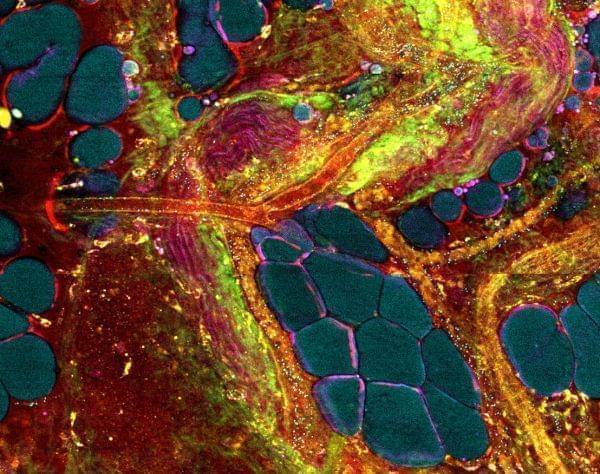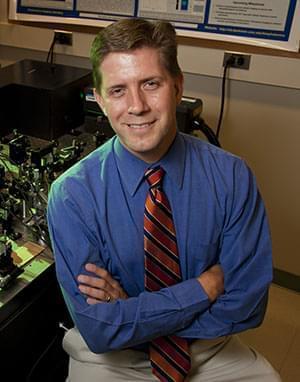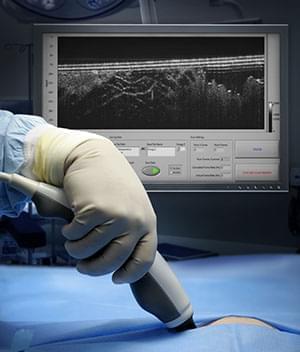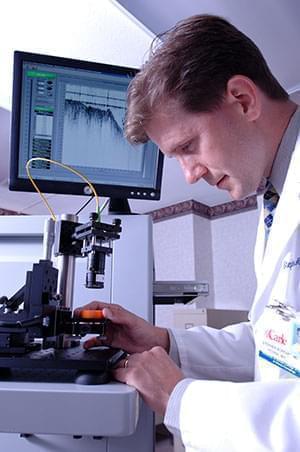Cancer Researcher On Breakthroughs, Translational Research and a State of the Art Imaging Center

A "label-free" multimodal optical image of a mammary tumor. It is called "label-free" because no dyes or stains were added to generate the colors. They came from the physics of how the light interacted with the molecules and cells. Images such as these are what Boppart hopes to collect during surgeries and from tissues to tell medical professionals what molecules and cells are present, and what functions are happening. Courtesy of Stephen Boppart
In the State of the Union address last month, President Obama announced a “moonshot to cure cancer.” We still haven’t heard many details of what this will entail - other than Congressional budget requests of $755 million in the fiscal year 2017 budget.
Closer to home here in Illinois, Dr. Stephen Boppart is one of the many people who could help make that “moonshoot to cure cancer” a reality.
He is both a medical doctor and the Abel Bliss professor of engineering, researching biomedical imaging and bioengineering at the Beckman Institute.

Stephen Boppart
He’s just added one more title to that list. Wednesday morning, the University of Illinois plans to announce he will be the university director of the new GSK Center for Optical Molecular Imaging.
The new center will develop advanced optical molecular imaging technologies for researching skin health, how medicine travels throughout the body, and, among other areas – cancer research. It’s an example of what he calls translational research - moving scientific research into the commercial sector.
“We develop ideas and technology in the lab, but we have to translate these into applications that really affect society and impact society,” said Boppart. “It’s bringing [those discoveries] from the bench to the bedside” and “from the patient to the population, and really being able to transform medicine with our new technologies.”
“My lab develops optical Coherence technologies and then translates those into biological and medical applications,” said Boppart. “We’re seeing things, we’re imaging and detecting things that are new – such as detecting cancer at a very early stage. We then team up with companies or industries to further commercialize … to make them more accessible to physicians and ultimately to help patients.”
The primary imaging technology he uses is Optical Coherence Tomography, which works much like ultrasounds. They send light into the tissue, and collect reflections back that create high-resolution images of cells and structures within tissues.

The intraoperative probe
“It’s almost like taking out tissue and looking at it under a microscope, but we can do this without taking the tissue out,” said Boppart. “So with these technologies we can look at early signs of cancer such as changes that go on in cells or tissue, or when a tumor starts to develop or spread.”
Along with his team of 25 researchers, the head of the Biophotonics Imaging Laboratory at the Beckman Institute for Advanced Science and Technology is developing two different probes.
“I’ve been developing different probes for different applications. One of those is imaging in surgery and one of those is imaging in primary care,” said Boppart.
The first, the intraoperative probe, will probably be available commercially in the next few years. The probe is currently being targeted to help increase the effectiveness of cancer surgeries. It helps the surgeons make sure they don’t leave any cancerous cells behind during the operation.
The second probe detects structural changes in cells, which allows them to see what cells are cancerous and what cells are not on a relatively shallow scale.

Boppart working in the lab
When a cell becomes cancerous, it goes through molecular changes that allow for the structural changes of rapid dividing causing cancerous tumors. This second probe is working to find the signaling techniques that cancers use to spread and metastasize.
A lot of the imaging that is done is typically looking at and finding tumors that are relatively late stage, and we know that cancer develops at a molecular level. So being able to image cells and detect changes at a molecular level is so important to being able to detect cancer early,” said Boppart.
Boppart was diagnosed with Non-Hodgkin’s Lymphoma at a fairly late stage. His work in early detection is inspired by his experience as a cancer survivor and the added trials his late diagnosis caused.
“That really motivated me to detect technologies to sense cancer in its earliest stages, because we know that by detecting cancer early it’s most amenable then to treatment and to cure,” said Boppart. “We want to develop new techniques such as looking at the blood, looking at cells or molecules that may be circulating in the body before a large tumor mass develops.”
While early detection is an incredibly important part of the White House’s “moonshot” initiative, Boppart says it will have to involve several different avenues.
That includes “developing new drugs and therapies, different ways of monitoring disease, and we really need to look at prevention as well as treatment. So I think all of these will come together under this new initiative,” said Boppart. “Perhaps it was a bit ambitious [for the White House] to say this will be cured in five years, but we all know this a very complex problem, it’s one that impacts everyone, and I think we need this type of push, of awareness, to bring us closer to our goal.”
